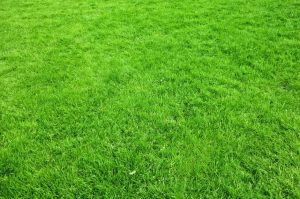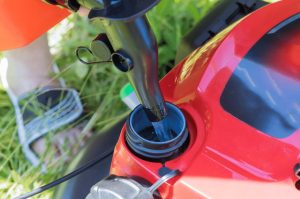In our gardens and lawns, onion weed stands as a formidable opponent, renowned for its resilience and stubbornness. This invasive plant, with its knack for survival, poses significant challenges for eradication, often outlasting conventional removal efforts.
Understanding its tenacity is crucial as we delve into effective strategies to combat this pervasive weed, ensuring our green spaces remain vibrant and healthy.
Understanding onion weed
Onion weed, a perennial menace in our gardens, is easily recognised by its thin, green, strappy leaves and small, white bulbs that emit a distinct onion-like aroma when crushed. This plant’s growth pattern is aggressive, with bulbs capable of producing multiple shoots, leading to dense infestations that can overwhelm native flora.
Classified as noxious due to its invasive nature and resilience against control measures, onion weed spreads both through bulbils underground and seeds, making its eradication a challenging task. Its ability to thrive in a wide range of conditions further cements its status as a formidable weed in our landscapes.
Why is onion weed difficult to control?
Onion weed’s notorious difficulty to control stems from its unique reproductive system.
Each plant can produce a multitude of bulbs underground, which, even when the main plant is removed, can remain dormant and later sprout into new plants. This bulb-based reproduction is complemented by the plant’s ability to spread through seeds, dispersed by the wind to colonise new areas rapidly.
The dual threat of bulbs and seeds means that simply pulling up the plants often isn’t enough; it can actually exacerbate the problem by disturbing the bulbs and spreading them further.
Additionally, the seeds have a high germination rate and can lie dormant in the soil until conditions are favourable, leading to sudden and unexpected outbreaks.
These characteristics make onion weed a persistent and spreading nuisance. Effective control requires a strategy that addresses both the immediate visibility of the plant and its hidden, underground network of bulbs, posing a significant challenge for gardeners and landscapers alike.

How to get rid of onion weed
Eradicating onion weed from our gardens and lawns demands a multifaceted approach, blending both chemical and natural strategies.
Chemical methods involve targeted herbicides that require careful application, while natural techniques focus on physical removal and habitat modification to disrupt the weed’s lifecycle.
Together, these approaches offer a comprehensive plan to tackle onion weed, aiming for long-term control and prevention.
How to get rid of onion weed chemically
The use of herbicides can offer a swift solution to an invasive problem but requires mindful application to minimise environmental impact and ensure safety for surrounding flora and fauna. Gardens overwhelmed by onion weed, where manual removal is impractical, often benefit most from this approach.
Gardeners opting for chemical control should prioritise products with targeted action to protect desirable plants and promote a healthy ecosystem.
Non-selective herbicides
When battling onion weed with chemical means, glyphosate-based non-selective herbicides stand out for their broad-spectrum efficacy.
However, their indiscriminate nature means they can harm any plant they come into contact with, not just the unwanted onion weed. To safeguard your cherished plants, it’s crucial to apply these herbicides with precision.
Using a paintbrush or a spot spray applicator allows for targeted treatment, ensuring only the onion weed receives the herbicide. This method reduces the risk to nearby plants and minimises the environmental footprint of your eradication efforts. Always follow the product’s instructions for the safest and most effective use.
Selective herbicides (for lawns)
For those of us with lawns plagued by onion weed, selective herbicides present a viable solution. These herbicides are formulated to target specific weeds, like onion weed, without causing harm to the grass. This specificity is crucial for maintaining a healthy lawn while combating the invasive weed.
When choosing a selective herbicide, look for products explicitly labelled for use against onion weed and compatible with your type of lawn grass. Application according to the manufacturer’s directions is essential for effectiveness and safety. Regular monitoring after treatment will help you assess the herbicide’s impact and determine if additional applications are necessary for complete control.
Best onion weed killer
This 1L solution, renowned for its broad-spectrum efficacy, tackles everything from invasive grasses to stubborn small trees. Its glyphosate-based formula, designed for low environmental impact, ensures a powerful yet eco-friendly approach to weed control. What sets this herbicide apart is its versatility and ease of use. Application is straightforward, requiring a dilution of 20 to 25ml per litre of water, with visible results in 3-5 days. Patience pays off as treated areas transition from lush green to a clear slate, ready for new growth. The packaging is designed for convenience, eliminating the guesswork from dosing. While it's a champion against a wide range of weeds, it's worth noting its limitations on tougher species like blackberries and the need for caution around pets and children. For those seeking a broader arsenal against garden invaders, explore more options at best weed killer, ensuring your garden remains a sanctuary, not a battleground.
How to get rid of onion weed naturally
Turning to nature’s toolbox offers a sustainable, eco-friendly approach to managing onion weed, aligning with the preferences of gardeners seeking to minimise chemical use.
Natural eradication methods, while often requiring more time and effort, provide a safer alternative for the environment, beneficial insects, pets, and families. One of the primary advantages of natural methods is their low impact on the surrounding ecosystem, preserving the health of soil and non-target plants.
However, these techniques may demand persistence and repeated application to achieve full eradication, making them best suited for gardeners with smaller infestations or those committed to organic gardening practices.
Digging out onion weed
Manually removing onion weed is a meticulous yet effective approach, focusing on the complete extraction of the plant, including its bulbs, to prevent regrowth. This method is particularly effective in smaller areas or where precision is necessary to protect surrounding plants.
- Choose the right tools: Arm yourself with a narrow trowel or a gardening fork, tools that allow for precision in digging around the onion weed without disturbing nearby plant roots.
- Water the area: Moistening the soil a day before the removal process can soften the ground, making it easier to remove the entire root system without breaking the bulbs.
- Dig carefully: Insert your tool into the soil at a slight angle around the onion weed, aiming to encompass the root system and bulbs. Gently lever the soil to loosen it around the plant.
- Remove the plant: Once loosened, carefully lift the onion weed, ensuring you remove the entire plant and its bulbs. Avoid shaking off excess soil vigorously, as this can disperse the tiny bulbs.
- Dispose of wisely: Place the removed onion weed into a bag for disposal. Do not compost, as this can lead to spreading the weed through your compost.
- Monitor and repeat: Keep an eye on the area for any signs of regrowth. Repeat the process as necessary, understanding that complete eradication may require several seasons of vigilant removal.
This hands-on method, while labour-intensive, offers a chemical-free option that, with diligence, can significantly reduce onion weed populations over time.
Smothering
Smothering is a natural, non-chemical method to combat onion weed, leveraging the principles of deprivation to hinder the plant’s growth. This technique involves covering the affected area with black plastic or applying steam or boiling water directly to the plants. Here’s how these methods work:
- Black plastic covering: By covering the infested area with black plastic, you effectively block sunlight, a critical component of photosynthesis. Without light, the onion weed cannot produce the energy it needs to grow and spread. Additionally, the black plastic traps heat, creating an inhospitable environment that further stresses and eventually kills the weed. This method requires patience, as the plastic should remain in place for several weeks to ensure the weed is completely eradicated.
- Steam or boiling water: Applying steam or pouring boiling water over onion weed delivers a shock of heat that denatures the plant’s proteins, effectively “cooking” it. This method is immediate and can be quite effective for spot treatment. However, it may require multiple applications to fully address the infestation, as not all bulbs may be affected by the initial treatment.
Both smothering techniques are environmentally friendly and avoid the use of harmful chemicals, making them suitable for gardeners looking for sustainable weed control options. While these methods can be labour-intensive and require careful application to avoid damaging desirable plants, they offer a safe and effective way to tackle onion weed naturally.
Weed mats
Weed mats act as a formidable barrier against onion weed, especially valuable in garden beds. These mats suppress unwanted growth by blocking sunlight, essential for weed proliferation, while allowing water and air to nourish desirable plants.
Installation involves clearing the area, cutting the mat to fit, and securing it with staples or pegs. This method not only impedes onion weed but also conserves soil moisture and reduces maintenance efforts. For optimal results, integrate weed mats with other gardening practices like mulching. A strategic approach to weed control, weed mats simplify garden upkeep and enhance plant health.
Natural remedies
Natural substances like corn gluten meal and vinegar offer eco-friendly solutions to combat onion weed:
- Corn gluten meal, a byproduct of corn milling, serves as a pre-emergent weed suppressant. When applied to the soil, it inhibits root formation in seedlings, preventing onion weed from establishing. For best results, spread corn gluten meal in early spring before the weed seeds germinate, and water lightly to activate its properties.
- Vinegar, with its acetic acid content, acts as a natural herbicide. It’s most effective when applied directly to the foliage of young onion weed plants under full sunlight. The acid burns the plant’s leaves upon contact, leading to dehydration and death. Use a spray bottle for targeted application, ensuring the vinegar solution (preferably with a 5% or higher acetic acid concentration) coats the onion weed leaves thoroughly. Reapplication may be necessary for complete eradication.
Both methods are safe for the environment and offer a non-toxic alternative to chemical herbicides, though they may require patience and persistence for full effectiveness.
How to get rid of onion weed in garden beds
Eradicating onion weed from garden beds requires careful strategies to protect valued plants. Let’s take a look at methods that’s worked for us:
- Begin with manual removal, gently extracting the weed to avoid disturbing surrounding roots.
- Utilise smothering techniques, such as laying down mulch or weed mats, to block sunlight and suppress new growth.
- Spot treat with natural herbicides like vinegar, applying directly to the onion weed while safeguarding adjacent plants.
- Integrate corn gluten meal in early spring to prevent seed germination.
These methods, combined with vigilant monitoring and maintenance, can effectively control onion weed without harming your garden’s biodiversity.
How to dispose of onion weeds
Trust us when we say eliminating onion weed is only the beginning.
The actual challenge is removing it to avoid future infections. The bulbs and seeds stay viable for a long time, even when extracted from the plant; thus, they must be handled carefully.
For example, putting onion weed in your compost or green trash bin will spread when the compost is utilised later. Instead, throw all components of the weed in a bag and allow them to dry out in the sun before discarding the bag in the general garbage bin.
Additionally, always clean any garden tools that have come into contact with the weed to avoid mistakenly reintroducing any residual seeds or bulbs into your garden. In this scenario, prevention is far superior to cure!
Innovative solutions to disposing of onion weeds
Did you know you can transform onion weed from a nuisance into a culinary delight! This pesky plant is edible, with a flavour reminiscent of onions.
Incorporate the leaves into salads, soups, or stir-fries for a nutritious boost. Ensure the plants haven’t been treated with chemicals before harvesting. This creative twist not only reduces waste but also enriches your meals.
How to restore a lawn or garden after onion weed removal
Restoring a lawn or garden after onion weed removal involves nurturing the soil and introducing plants that can thrive in the cleared space. Start by aerating the soil to improve oxygenation and water penetration.
Apply a layer of compost or organic matter to replenish nutrients and enhance soil structure. Select native or adaptive plants known for their resilience and ability to compete with any residual weed seeds.
For lawns, overseeding with a suitable grass mix can help establish a dense turf that discourages weed growth. Regular maintenance, including proper watering and mulching, will support a healthy, vibrant garden or lawn free from onion weed resurgence.
How to prevent onion weed from growing
Preventing onion weed from growing in the first place is often easier than controlling it once it’s established. Here are some tips for preventing onion weed from growing:
- Avoid planting infected bulbs or plants: If you’re purchasing bulbs or plants for your garden, inspect them carefully to ensure they’re not infected with onion weed.
- Use mulch: Applying a layer around your plants can help prevent onion weed seeds from germinating and growing.
- Keep your garden well-maintained: Regularly weeding and removing any onion weed plants or seedlings that appear can help prevent them from spreading.
- Practise good sanitation: Onion weed seeds can easily spread on clothing, shoes, and garden tools, so be sure to clean and sanitise your tools and shoes regularly.
- Consider using a pre-emergent herbicide: Pre-emergent herbicides can effectively prevent onion weed seeds from germinating and growing. Be sure to follow the instructions carefully and use them only as directed.
Ultimately, preventing onion weeds from growing in the first place is the best way to control them, so be sure to mulch your garden beds, avoid planting infected bulbs or plants, and pull weeds as soon as you see them.
Conclusion
In the battle against onion weed, persistence and a multi-faceted approach are essential.
From manual removal to chemical treatments and natural remedies, each strategy plays a crucial role in eradication. Embrace these methods, stay vigilant for regrowth, and nurture your garden’s health.
With dedication and the right techniques, you can reclaim your green spaces from this persistent invader, ensuring a thriving, weed-free environment.
FAQs
What is the best way to kill onion weed?
In our opinion, hand weeding by removing little bulbs is the best technique to kill onion weed. However, for large infestations, this may be challenging.
Can onion weed be used beneficially in any way, or is it purely a nuisance weed?
Although onion weed is edible and has been used in traditional medicine, it is frequently considered a nuisance owing to its invasive nature.
How do different seasons affect the growth and spread of onion weed?
Seasons influence the growth and spread of onion weed: it germinates in the cooler months, spreads in the warmer months, and goes dormant in extreme heat or cold.
What is the life cycle of onion weed?
The life cycle of an onion weed includes germination in cooler months, growth and spread in warmer months, and dormancy in periods of high heat, with a new generation sprouting from bulbs each year.







